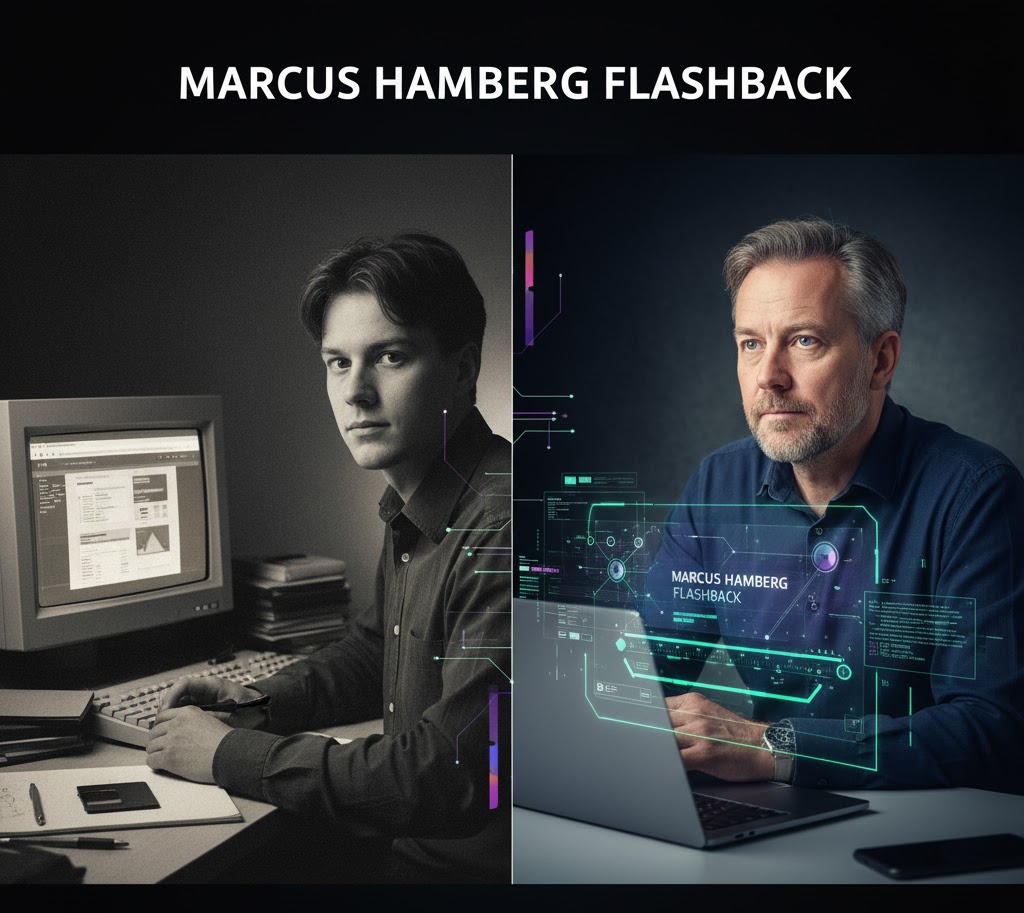In the ever-evolving world of the internet, a few names occasionally resurface, sparking discussions that mix curiosity, nostalgia, and fascination. One such term that has captured the attention of many digital communities is Marcus Hamberg Flashback. This phrase has grown into something more than a simple name—it represents a concept, a phenomenon, and a reflection on how online culture interacts with memory and identity.
The Marcus Hamberg Flashback is not merely a recollection of past events. It is a cultural experience that shows how our digital footprints continue to shape our present and influence how people perceive us long after the original moments have passed. Understanding this topic requires exploring the story of Marcus Hamberg, the origins of the “flashback” concept, and its broader significance in online culture.
Who Is Marcus Hamberg?
Marcus Hamberg is often described as a figure deeply connected to online communities, particularly in Scandinavian digital culture. While much about his background remains surrounded by speculation, what’s clear is that he became known through his presence on discussion platforms, social media, and online forums. His name is tied to conversations about creativity, technology, memory, and the power of revisiting past online content.
Hamberg’s early activity is believed to have included thought-provoking posts about digital identity and how people evolve over time through their online expressions. This earned him both followers and critics, as his insights often reflected the tension between authenticity and performance in digital spaces.
Over the years, archived posts, comments, or interviews attributed to Marcus Hamberg began to resurface periodically—each time triggering a wave of renewed attention. This is what eventually came to be called the Marcus Hamberg Flashback: a moment when his past statements or ideas return to public discussion, prompting reflection on both the individual and the culture that surrounds him.
What Does “Marcus Hamberg Flashback” Mean?
The term Marcus Hamberg Flashback refers to the phenomenon of old content connected to Marcus Hamberg reappearing in public discourse, whether through social media, blogs, or forums. It’s not just a single event—it’s a recurring experience where communities collectively revisit earlier material to reinterpret it through the lens of the present.
In a broader sense, the phrase has become symbolic of the way digital culture works. On the internet, nothing ever truly disappears. Old posts, videos, or conversations can be rediscovered at any time, reshaped by new audiences, and given new meaning. A “flashback” is more than nostalgia—it’s a confrontation between past and present values.
When people mention a Marcus Hamberg Flashback, they are often referring to the rediscovery of something that once went unnoticed or forgotten. It might be an idea that now feels visionary, or a statement that sparks debate because times have changed. Either way, it shows the power of digital memory.
The Cultural Importance of the Marcus Hamberg Flashback
The reason the Marcus Hamberg Flashback has drawn attention is that it speaks to something universal in the online experience: the idea that our past never truly goes away. Every tweet, post, or comment becomes part of a permanent archive that can be revived at any moment.
For many, this concept is fascinating because it challenges how we think about growth and identity. We often see ourselves as constantly evolving, yet the internet can instantly pull us back into our past selves. The Marcus Hamberg Flashback demonstrates this tension vividly.
- It connects the past and present.
Each flashback offers a chance to see how ideas have aged. Some may find that Hamberg’s older perspectives remain insightful; others may critique them based on modern values. Either way, it opens a dialogue about change. - It reflects digital immortality.
Unlike traditional memory, the digital world preserves everything. Hamberg’s flashbacks show how an online presence can outlive its original context and continue influencing discussions years later. - It sparks community engagement.
Online forums and social media thrive on shared moments of rediscovery. The Marcus Hamberg Flashback serves as a collective experience that unites people through reflection, debate, and nostalgia. - It encourages accountability and transparency.
When past content resurfaces, it forces both creators and audiences to confront how their views or behaviors have evolved. In that sense, flashbacks promote honesty and growth.
Lessons from the Marcus Hamberg Flashback
Beyond the fascination, the Marcus Hamberg Flashback offers several lessons about the digital world and how individuals navigate it.
The Internet Never Forgets
The first and most obvious lesson is permanence. Once something is posted online, it can always resurface. This permanence can be both a gift and a curse. For some, it preserves their creative or intellectual contributions; for others, it may bring back moments they wish were forgotten. Marcus Hamberg’s case demonstrates how both sides of this coin can coexist.
Context Changes Everything
When content from the past reappears, it’s often interpreted differently. What might have been acceptable or unnoticed years ago could spark controversy today. Context evolves with culture. The Marcus Hamberg Flashback reminds us to approach rediscovered material with fairness and understanding of the time it was created.
Growth Is a Continuous Process
A flashback is a mirror—it shows how much someone has changed. When audiences revisit Hamberg’s earlier thoughts, they are also invited to reflect on their own growth. The digital world documents our evolution, and revisiting it can be a powerful reminder of how far we’ve come.
Nostalgia Can Be Constructive
Many flashbacks evoke nostalgia, but in this case, it’s not just sentimental. The Marcus Hamberg Flashback encourages constructive nostalgia—using the past to inspire better understanding of the present. It shows that looking back doesn’t have to mean being stuck; it can mean learning and improving.
The Psychology Behind Flashbacks
From a psychological point of view, flashbacks—especially digital ones—activate the same emotional centers associated with memory and identity. Humans naturally seek continuity between who they were and who they are now. When the Marcus Hamberg Flashback occurs, it taps into that desire for connection.
People enjoy revisiting the past because it provides reassurance that their experiences are part of a larger story. At the same time, flashbacks can challenge our self-image by showing inconsistencies or outdated views. This tension between pride and discomfort fuels much of the conversation around figures like Hamberg.
The Role of Online Communities
One of the most intriguing aspects of the Marcus Hamberg Flashback is how communities participate in keeping it alive. Online forums, discussion boards, and even social media threads act as digital memory keepers. Users collect, archive, and reshare content, giving it new meaning over time.
In a sense, the flashback belongs as much to the community as it does to Marcus Hamberg himself. The collective effort of revisiting and analyzing old material transforms it into a shared cultural artifact. It’s a process of digital archaeology—uncovering fragments of the past to understand the present.
Why the Marcus Hamberg Flashback Still Matters
The enduring interest in Marcus Hamberg Flashback reflects the ongoing relationship between technology and humanity. It represents how the internet has blurred the boundaries between past and present, private and public, memory and history.
In today’s world, everyone has a potential flashback waiting to happen. The rise of social media means our digital selves are always being documented, stored, and sometimes revived. Learning from the Marcus Hamberg Flashback can help us navigate that reality with awareness and intention.
It teaches us to:
- Be thoughtful about what we share.
- Accept that our digital past may resurface.
- Use flashbacks as tools for self-reflection, not self-criticism.
- Recognize that memory—digital or human—is always evolving.
Conclusion
The story of the Marcus Hamberg Flashback is more than a curious internet trend. It’s a reflection of how digital culture remembers, reinterprets, and reshapes identity over time. What began as the resurfacing of one individual’s online history has become a metaphor for the collective experience of living in the digital age.
We all leave traces of ourselves online, and those traces may return when we least expect them. Whether that’s frightening or inspiring depends on how we choose to engage with our own flashbacks. Marcus Hamberg’s example encourages us to embrace them as opportunities—to learn, to grow, and to understand the power of memory in shaping who we are.
In a world that moves faster than ever, the Marcus Hamberg Flashback reminds us that the past is never truly gone—it’s simply waiting to be rediscovered, one click at a time.



